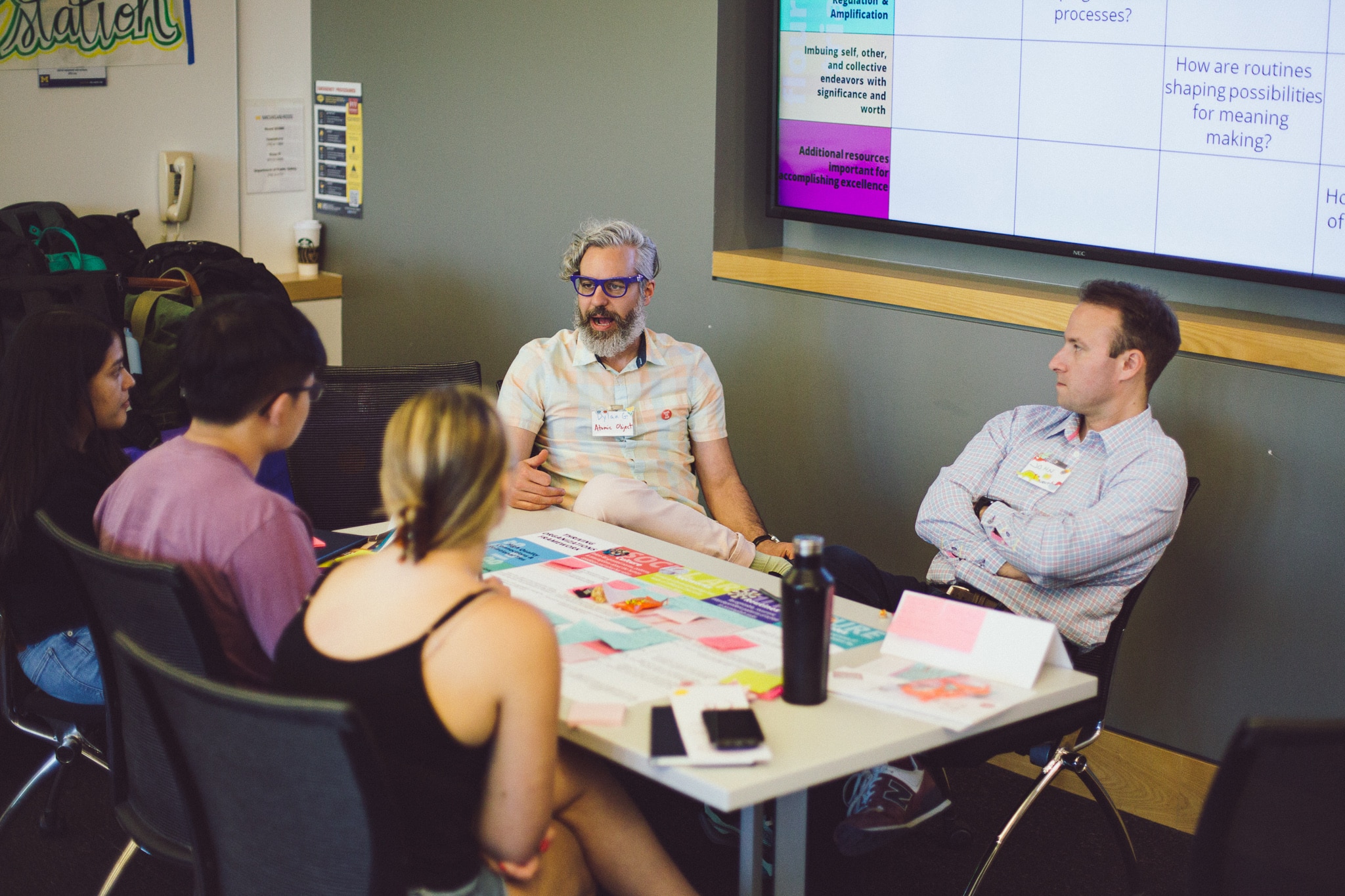When candidates or community members mention Atomic Object, they often highlight positive aspects of our culture. At Atomic Object, we take great pride in our people and the work we create with our clients. While I’ve always acknowledged this strength, the ability to define it in concrete terms has been elusive. However, this shifted when I had the opportunity to participate in the Magnify program.
This program, offered by the Center for Positive Organizations at the Ross School of Business at the University of Michigan, presented a more targeted approach to assessing and building a thriving environment. It also ignited my excitement for exploring this framework and shared taxonomy.
Magnify Program
As a newcomer to this content, I must admit these are still fresh concepts. Nonetheless, its potential excited me and made me want to share it. My goal is to present it as I currently understand it, knowing that my comprehension will evolve. What struck me the most about the Magnify program was its framework thinking and the shared language it provided. This allows us to engage in deeper discussions about these topics at Atomic.
The Magnify program is a bridge between students and companies, offering a course focused on studying thriving organizations. As part of the program, students and participating companies collaborate, with the organizations serving as case studies. This hands-on approach not only enriches the learning experience for the students but also provides valuable insights and actionable strategies for the companies involved. It’s a true win-win scenario. The first session was masterfully led by Betsy Erwin and Monica Worline and a few others from the Center for Positive Organizations.
The initial meeting of the Magnify program impressed me. I was thrown into a room with eager students and organizational partners who were also part of this journey. What struck me immediately was the warm and welcoming environment they created, which somehow managed to avoid any hint of artificiality. The day was expertly designed, seamlessly weaving together activities that facilitated connections and fostered a sense of community.
The session allowed leaders within our office to step back and view our company through a more holistic lens. We examined what truly drives thriving within Atomic Object, delving into the factors that contribute to our state of affairs.
Central to our discussions was the idea of a thriving organization and the patterns those organizations create to meet their needs. We explored what it means to thrive, both as individuals and as a collective. Together, we defined it as a way to build systems that allow people to thrive in a sustainable way. It became clear that certain conditions must be met for flourishing, leading us to the concept of the flourishing triangle.
The Flourishing Triangle
The Flourishing Triangle encapsulates the essential conditions for flourishing. Emotion, connection, and meaning emerged as the elements that must be nurtured to foster thriving.
- Positive Emotion. Positive emotion refers to the experience of emotions such as joy, and happiness. Feeling these emotions can ultimately lead to a sense of well-being and satisfaction.
- Positive Meaning. Positive meaning involves finding purpose and significance. It requires an understanding of the value and impact of one’s actions and seeing them as meaningful, contributing to the greater good.
- Positive Connections. The idea of positive connections gets at the importance of high-quality connections. It seems these are not required to be long, but they do need to be deep and meaningful.
The flourishing triangle felt impactful to me at both the individual level and the collective that is our office and company. We also talked about the uplifting nature of improving each and all of these criteria causing a fly-wheel effect.
Social Architecture
To enable these three criteria to create thriving patterns, we turned our attention to the concept of social architecture. My understanding of social architecture encompasses foundational elements that shape the dynamics of an organization. These elements are culture, roles, routines, and networks.
- Culture. These are the shared rituals, beliefs, values, and norms that guide behavior and set how individuals interact and collaborate.
- Roles. Roles represent the formal and informal responsibilities individuals hold within the organization.
- Routines. Routines are the way tasks are accomplished that shape the organization’s operations.
- Networks. Networks create paths through an organization’s relationships. I kept thinking about it as the delivery mechanism of the system.
After a deep but brief introduction to these new concepts, we put this knowledge to work by creating an organizational landscape. This landscape layered the concepts we talked about above by identifying what we do at Atomic and placing them on a matrix for evaluation. This activity pushed us to identify areas of overlapping efforts and uncover potential opportunities for improvement.
Growing My Understanding
With the conclusion of the first session of the Magnify program, I found myself personally connected to the concepts of the flourishing triangle and social architecture. I am grateful for the opportunity to participate in programs like Magnify. I’m so excited to see how my understanding of these topics grows as I learn more. Moreover, it’ll be fascinating to see how the student’s work will impact the level of thriving at our organization.
Helpful links:

